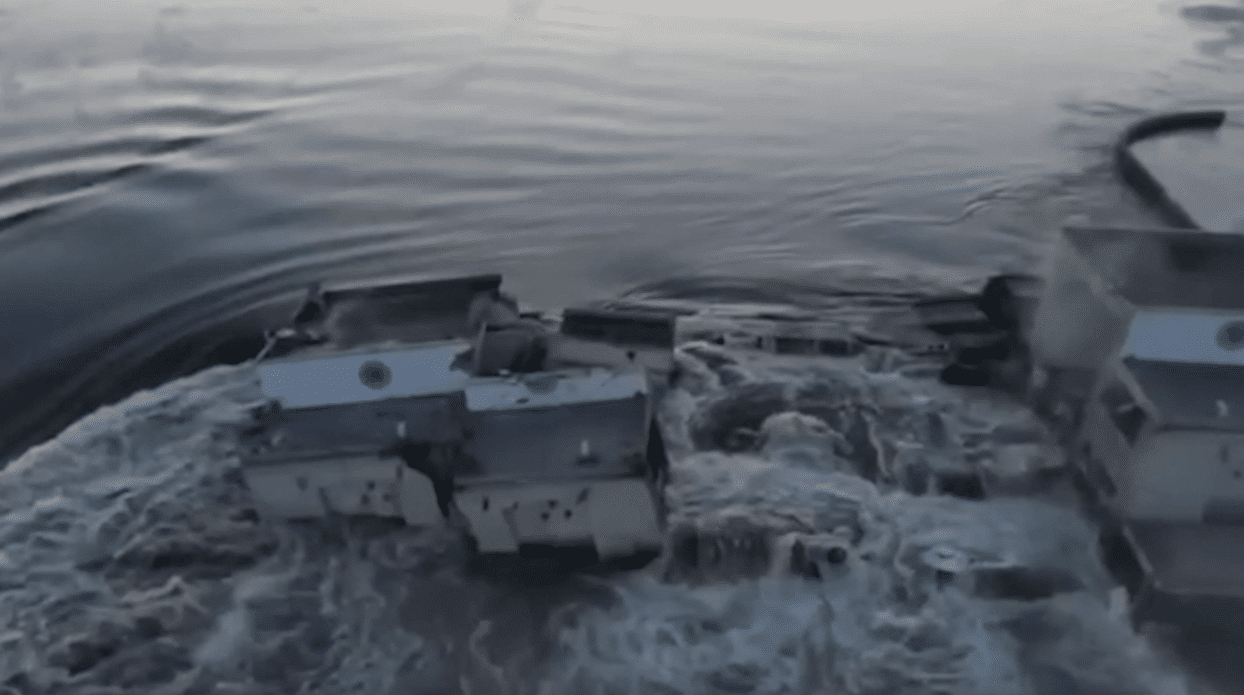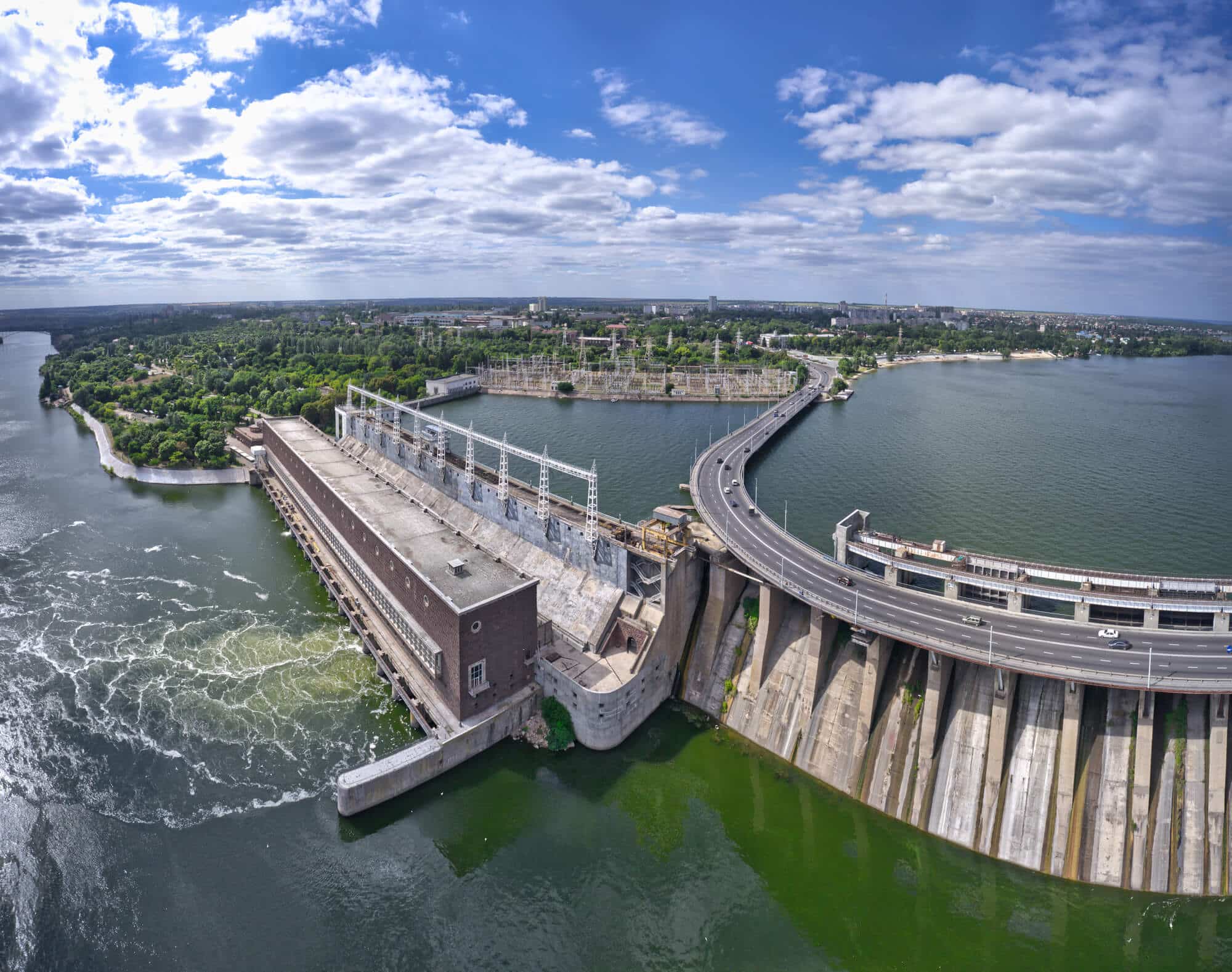The destruction of the Nova Kakhovka dam came just as it seemed that Ukraine's counterattack was about to begin. It's probably not a coincidence. The operation was designed to engage the Ukrainian army in evacuating residents and block the possibility for Ukraine to liberate Crimea
By David Hastings Dunn, Professor of International Politics in the Department of Political Science and International Studies, University of Birmingham and Stephen Wolff, Professor of International Security, University of Birmingham

The destruction of the Nova Khakhovka dam came just as it looked like Ukraine's counterattack was about to begin.
The dam breach, apparently caused by an explosion or violent explosions, caused water to flow from a reservoir with a volume of 16.4 million cubic meters over a vast area in the Kherson region of southern Ukraine occupied by Russia. Thousands of people were evacuated.
The destruction of the dam led Moscow and Kiev to accuse each other of what is considered a war crime. Kremlin spokesman Dmitry Peskov was well prepared with his statement that: "We can already unequivocally declare (it was) intentional sabotage by the Ukrainian side," and stated that Kyiv's goal is to rule out cases.
There are precedents in the history of Russia for such action. Stalin ordered the destruction of a dam across the Dnipro River in 1941 against invading German forces. Russia also adopted a scorched earth policy during the Napoleonic invasion of 1812, leaving the French army with very little to live on and only the burning ruins of Moscow to occupy. Devastating destruction of things it claims to value seems to be part of the Russian way of war.
It is important to note that so far there is no conclusive proof of how the dam was breached, although there are widespread reports of an explosion in the early hours of Tuesday morning. But, despite the competing claims in this case, the key question is who stands to gain the most from what could turn into a major disaster far beyond the banks of the Dnipro River.
According to Mykhailo Podoliak, one of the most senior advisers of Ukrainian President Volodymyr Zelensky, the answer to this question is clear: Russia blew up the dam in order to thwart the Ukrainian attack in this area.
Given the location of the dam, such an argument makes sense. The huge flood it caused is expected to destroy large areas on both banks of the Dnieper south towards the Crimean Peninsula. This will make it difficult for offensive operations by the Ukrainian ground forces in this area, probably in the coming months, and without similarly weakening the Russian defense lines.
Furthermore, it would also make it difficult for Ukrainian forces to advance further towards Crimea, a peninsula that Russia has illegally occupied since 2014. The dam itself also included a road that Ukrainian forces could use to advance into the Kherson region as part of their counteroffensive. The Dnipro River, now full of floodwaters, is much more difficult for advancing forces to cross.
Crimea is also affected in another way by this man-made disaster: it is crucially dependent on the Nova Khakhovka reservoir for drinking water and irrigation. Cutting off such supplies during the summer will have immediate and long-term humanitarian and economic consequences, the extent of which is difficult to estimate at this stage.
Such an act of economic self-harm also raises the question of how committed Russia is to its future in Crimea. It looks more like an attempt to cause long-term damage to Ukraine's viability as a functioning society and economy.
A third dimension refers to the Zaporizhia nuclear power plant, the largest nuclear facility in Europe. It has been under Russian control since the first weeks of last year's invasion, and cooling water supplies to its reactors are at risk, although immediate reports say the situation is under control.
Russia's apparent willingness to damage infrastructure in this way can also be read as an indication that Russia does not have the ability to thwart the Ukrainian counterattack with conventional military forces. Instead, the Kremlin seems prepared to use economic and environmental vandalism in an effort to turn the tide.
Blaming Kiev

The attempt to place the blame on Kiev is reminiscent of previous episodes in which the Kremlin tried to build a narrative about Ukrainian plans to detonate a dirty bomb or accused Washington of running secret biological and chemical weapons laboratories in Ukraine.
The destruction of the Nova Kakhovka Dam indicates a new phase in this war. It illustrates Moscow's efforts to control the narrative over who is responsible for the most heinous acts in the conflict, after months of negative coverage of Russia's conduct in the war.
The Kremlin also sought to make the most of the drone attacks on Moscow, which it similarly painted as "terrorist" operations.
But the demolition of a dam that held back a body of water the size of America's Great Salt Lake and provided hydroelectric power, drinking water and irrigation to Crimea shows a blatant disregard for the residents, many of them ethnic Russians.
Despite the Kremlin's rhetoric, this episode suggests that Russia is less interested in freeing Ukraine from its current leadership and more interested in destroying its ability to function as a sovereign nation. The forced divorces, the abduction of 19,000 children and the bombing of civilian areas were all designed to depopulate and cause long-term damage.
This action is part of this approach, of destroying the country for years to come. But the expected effect of such destructive acts on the population of Ukraine will be to strengthen their determination to liberate their country, and beyond that to end the Russian threat to their country in the future
For the article in THE CONVERSATION
More of the topic in Hayadan:
- The war in Ukraine highlights the strategic importance of private satellite companies in times of conflict
- Phenomenon: Russian speakers in Ukraine abandon the language and switch to Ukrainian as a protest against the invasion * Is Ukrainian a language?
- Environmental terrorism from Europe may also reach Israel

5 תגובות
You publish fake news, lies.
Thanks Abby for interesting articles. Shabbat Shalom. Suppose Russia does not win the war. Ukraine needs to make a calculation whether it wants to become a poor and national country or prosper economically and have a strong army and avoid war.
In my opinion, Ukraine and the West have done this. The harm to the Russians is great, and the bonus - they blame Russia for everything. Western media = garbage bin of globalists
Well, in the not-too-distant future it will become clear a little more about who damaged the dam, and the things will be published in a weak answer, in the more remote corners of the news sites, for reasons understandable to those in the know.
You can look at past events from this war to begin to see the pattern, such as the Nordstrom pipeline explosion, or even events on the world stage, such as the hiding of Jeffrey Epstein's diaries, or the hiding of Hunter Biden's laptop, or Trump's investigations into ties with Russia, or many others.
What a hodgepodge of nonsense that is based on precedents from two hundred years ago and an apparently a priori assumption that the only thing the Russians know how to do is destroy, so they are obviously guilty.
In World War II, there were many cases of dam explosions and damage to population infrastructure as a result, and some of them were actually from the Allies, so the claim about Stalin is simply a ridiculous claim.